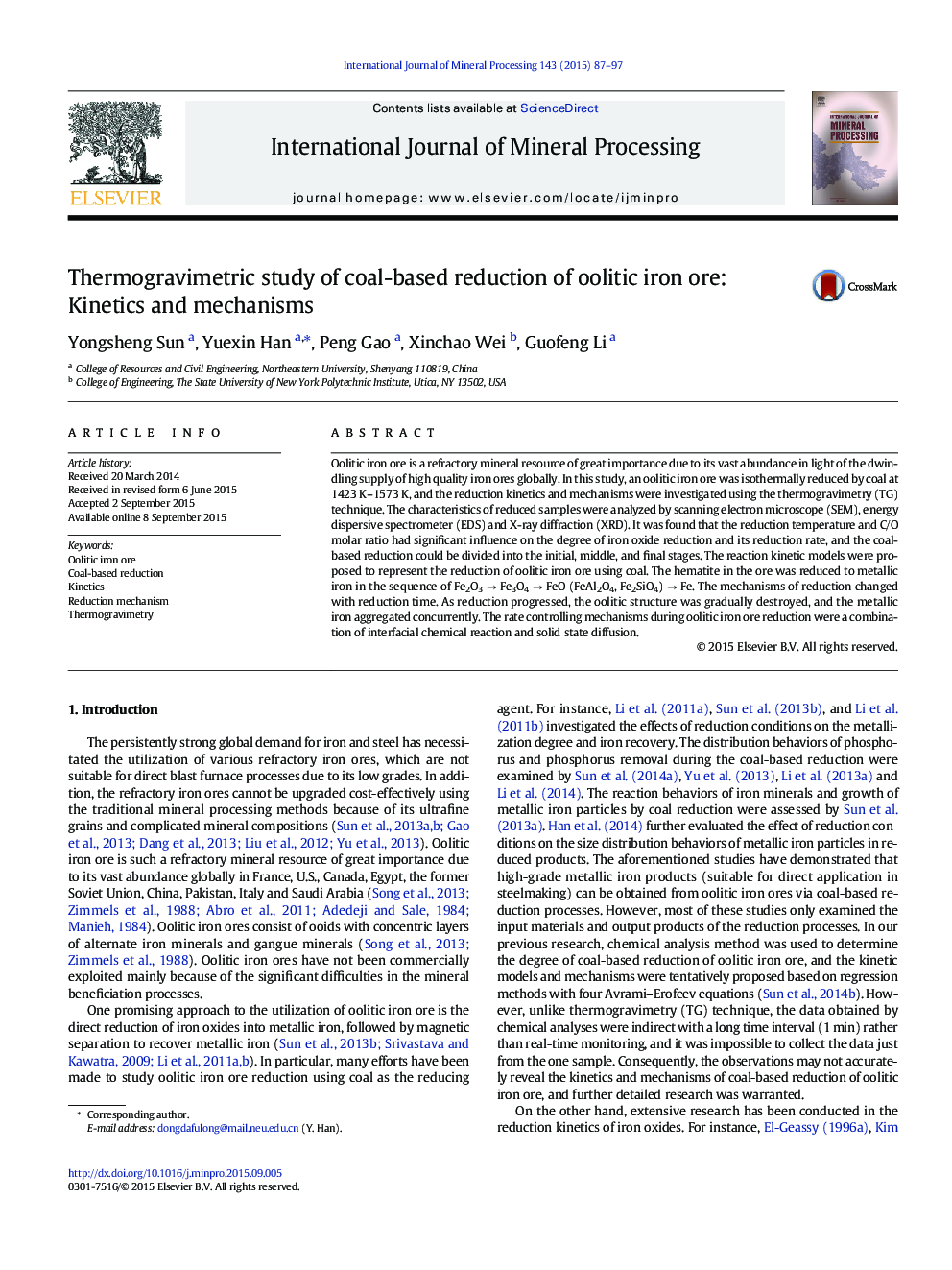| Article ID | Journal | Published Year | Pages | File Type |
|---|---|---|---|---|
| 213763 | International Journal of Mineral Processing | 2015 | 11 Pages |
•The reduction kinetics of oolitic iron ore using coal was investigated by TG.•Temperature and C/O molar ratio showed a pronounced effect on the reduction.•The reduction process could be divided into initial, middle, and final stages.•The activation energy, pre-exponential factor, and kinetic model were determined.•The mechanisms of reduction changed as the reduction process proceeded.
Oolitic iron ore is a refractory mineral resource of great importance due to its vast abundance in light of the dwindling supply of high quality iron ores globally. In this study, an oolitic iron ore was isothermally reduced by coal at 1423 K–1573 K, and the reduction kinetics and mechanisms were investigated using the thermogravimetry (TG) technique. The characteristics of reduced samples were analyzed by scanning electron microscope (SEM), energy dispersive spectrometer (EDS) and X-ray diffraction (XRD). It was found that the reduction temperature and C/O molar ratio had significant influence on the degree of iron oxide reduction and its reduction rate, and the coal-based reduction could be divided into the initial, middle, and final stages. The reaction kinetic models were proposed to represent the reduction of oolitic iron ore using coal. The hematite in the ore was reduced to metallic iron in the sequence of Fe2O3 → Fe3O4 → FeO (FeAl2O4, Fe2SiO4) → Fe. The mechanisms of reduction changed with reduction time. As reduction progressed, the oolitic structure was gradually destroyed, and the metallic iron aggregated concurrently. The rate controlling mechanisms during oolitic iron ore reduction were a combination of interfacial chemical reaction and solid state diffusion.
Graphical abstractFigure optionsDownload full-size imageDownload as PowerPoint slide
